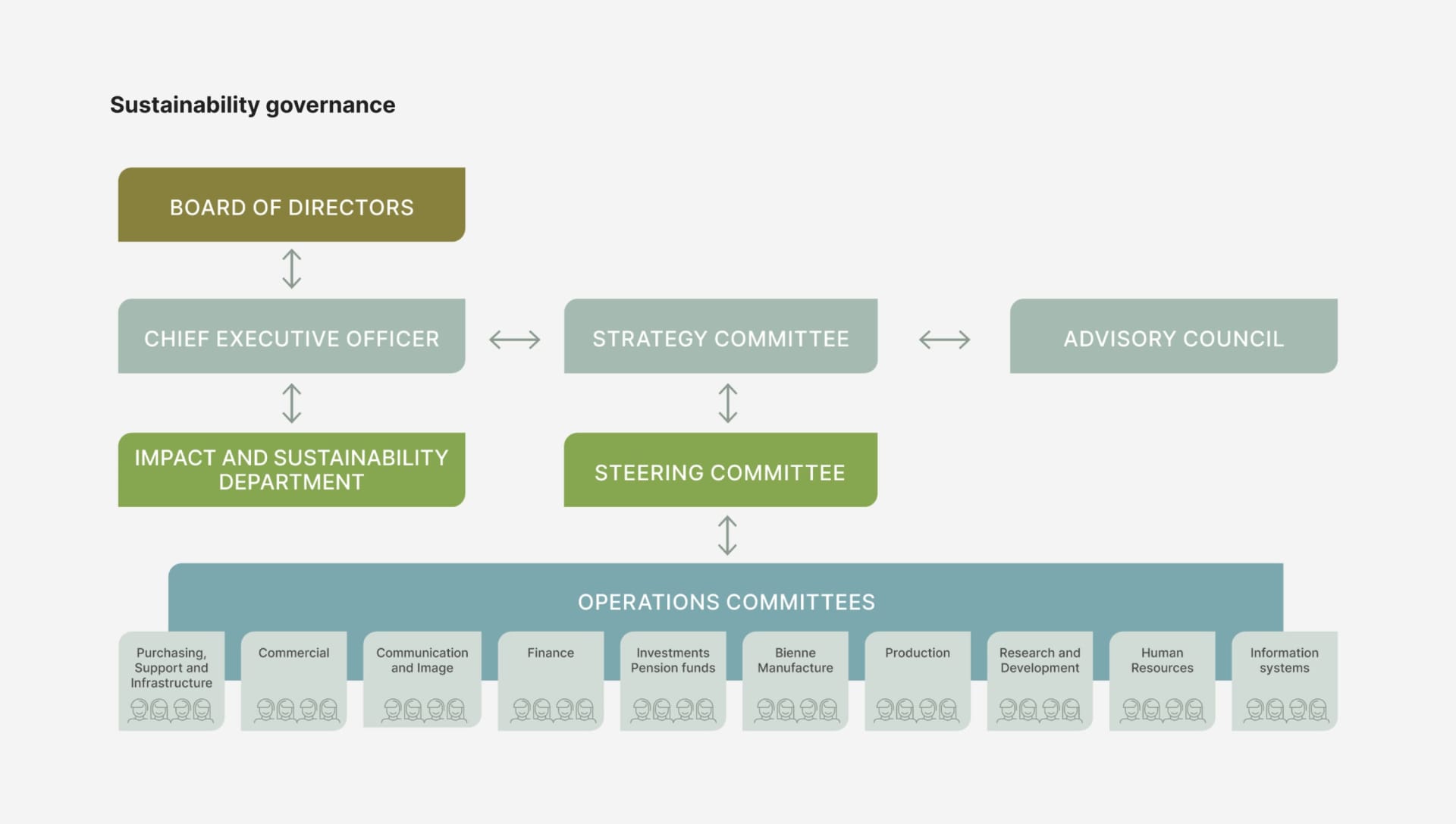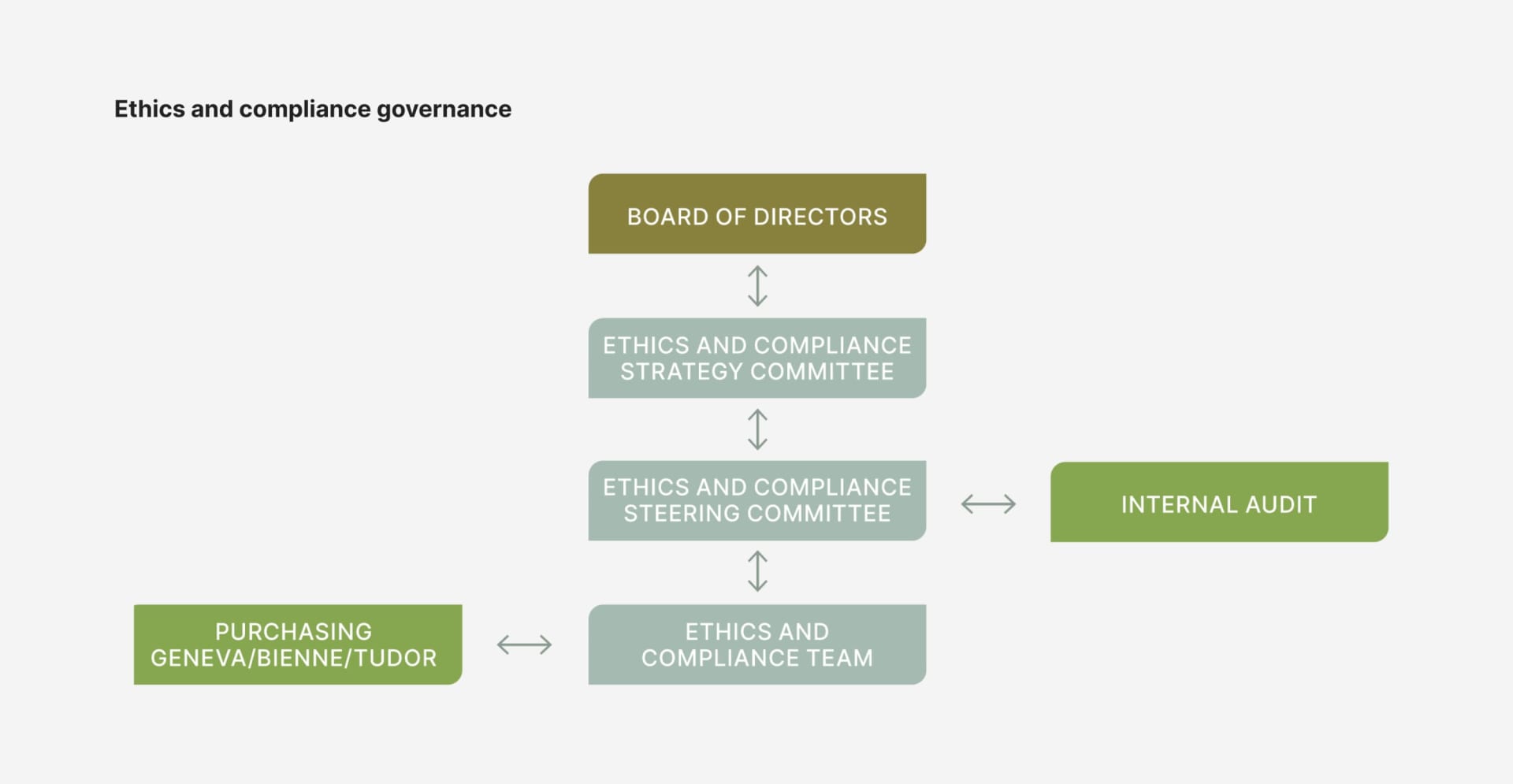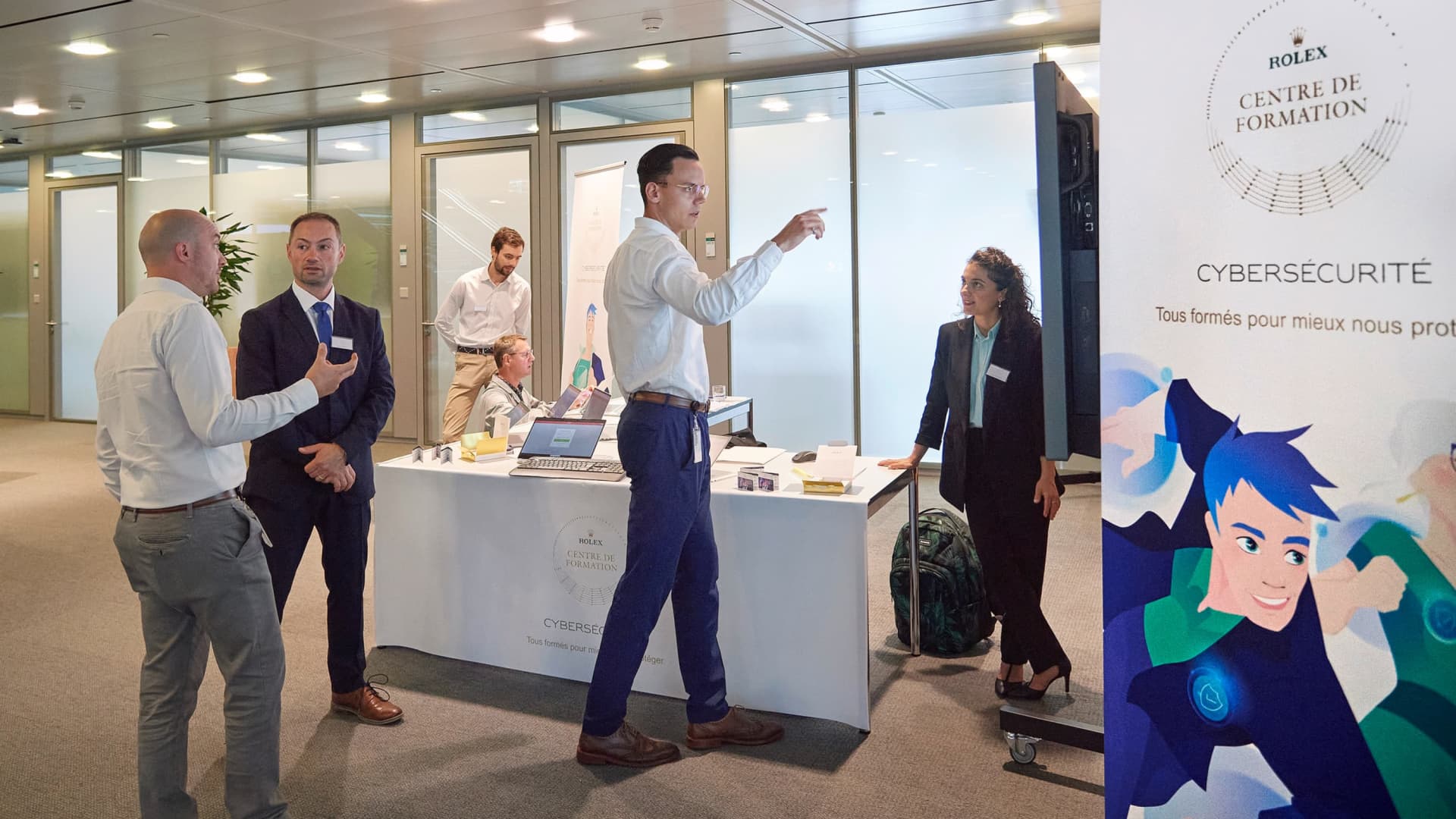Responsibilities
Ethics and Compliance Strategy Committee
The Ethics and Compliance Strategy Committee comprises, at a minimum, the Director of the Purchasing, Support and Infrastructure (PSI) Division, the Head of Purchasing and the Head of Ethics and Compliance at Rolex SA. The main role of this committee, which meets at least twice a year, is to guarantee ethics and compliance governance by approving the internal charter, rollout plans and due diligence work. Its responsibilities also include approving risk maps, working with at-risk stakeholders and reviewing the due diligence report, which it submits to the Board of Directors for signature.
Ethics and Compliance Steering Committee
The Ethics and Compliance Steering Committee is made up of, at a minimum, the Heads of Purchasing of Rolex SA, Manufacture des Montres Rolex SA, Montres TUDOR SA and Manufacture TUDOR SA, the Head of Public Relations of the Communication and Image Division of Rolex SA, the Head of Finance Switzerland of Rolex SA and the Head of Ethics and Compliance of Rolex SA. This committee meets at least 10 times a year. It oversees the production of the annual due diligence report, the rollout plan and due diligence work, as well as stakeholder management and cases emanating from the alert system.
Ethics and Compliance Team
The Ethics and Compliance Team reports to the Ethics and Compliance Steering Committee. The Head of the Ethics and Compliance Team has direct access to both the Strategy Committee and the Steering Committee, with whom they communicate and talk regularly. In charge of operational activities relating to ethics and compliance, this team is responsible for:
— monitoring value chains and due diligence requirements;
— training all the group’s stakeholders in due diligence and compliance;
— ensuring the group’s external due diligence audit is completed successfully;
— monitoring the integration process for new external stakeholders;
— monitoring the process for investigating and closing alerts;
— preserving the anonymity and confidentiality of the whistleblowers.
The Ethics and Compliance Team carries out its activities impartially and independently of the objectives of other internal departments or divisions. This provides additional assurance regarding the level of control of the risks associated, among other things, with the scope of the ODiTr.






